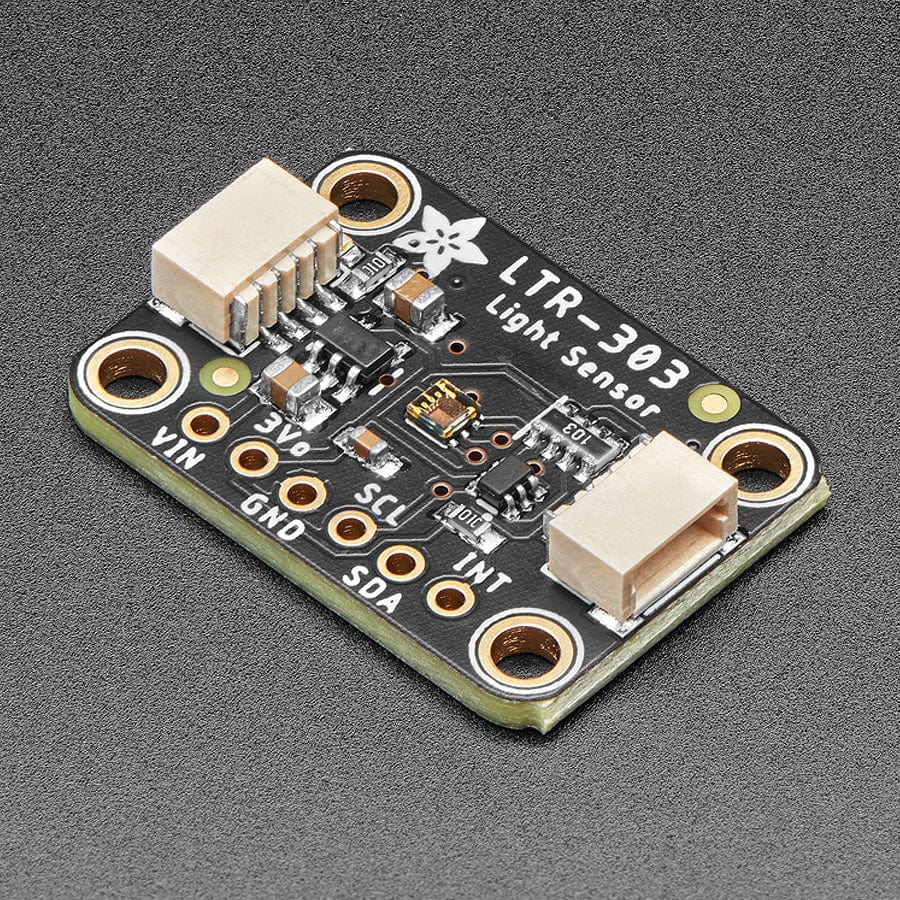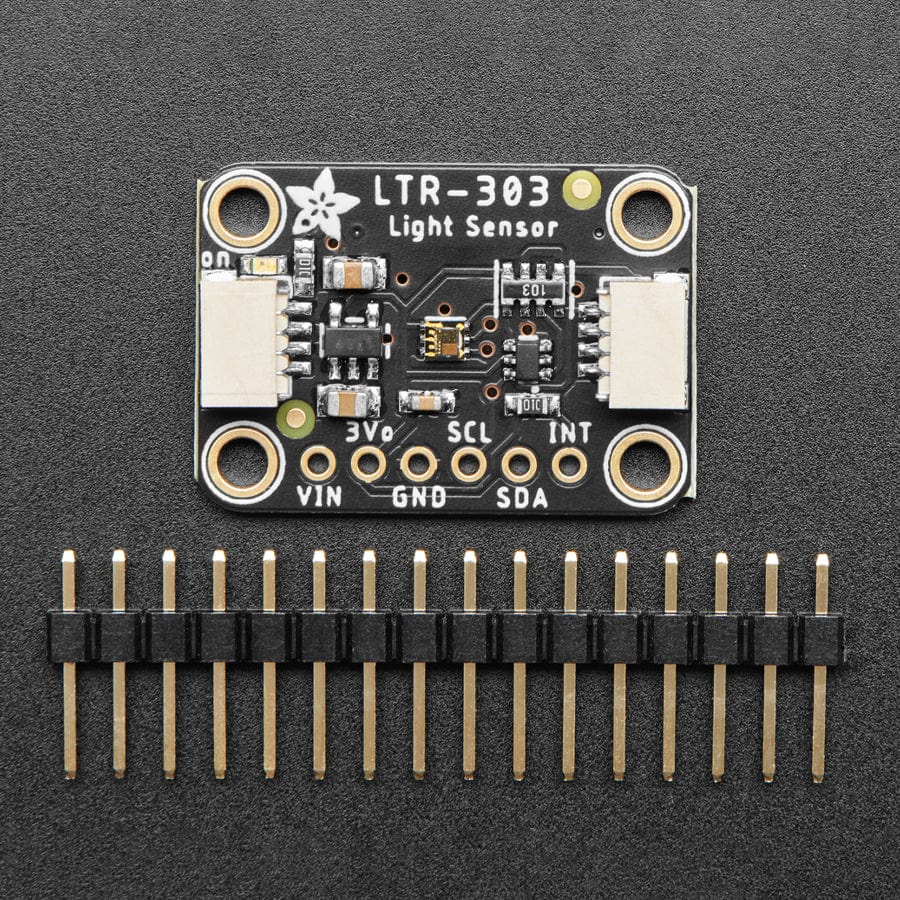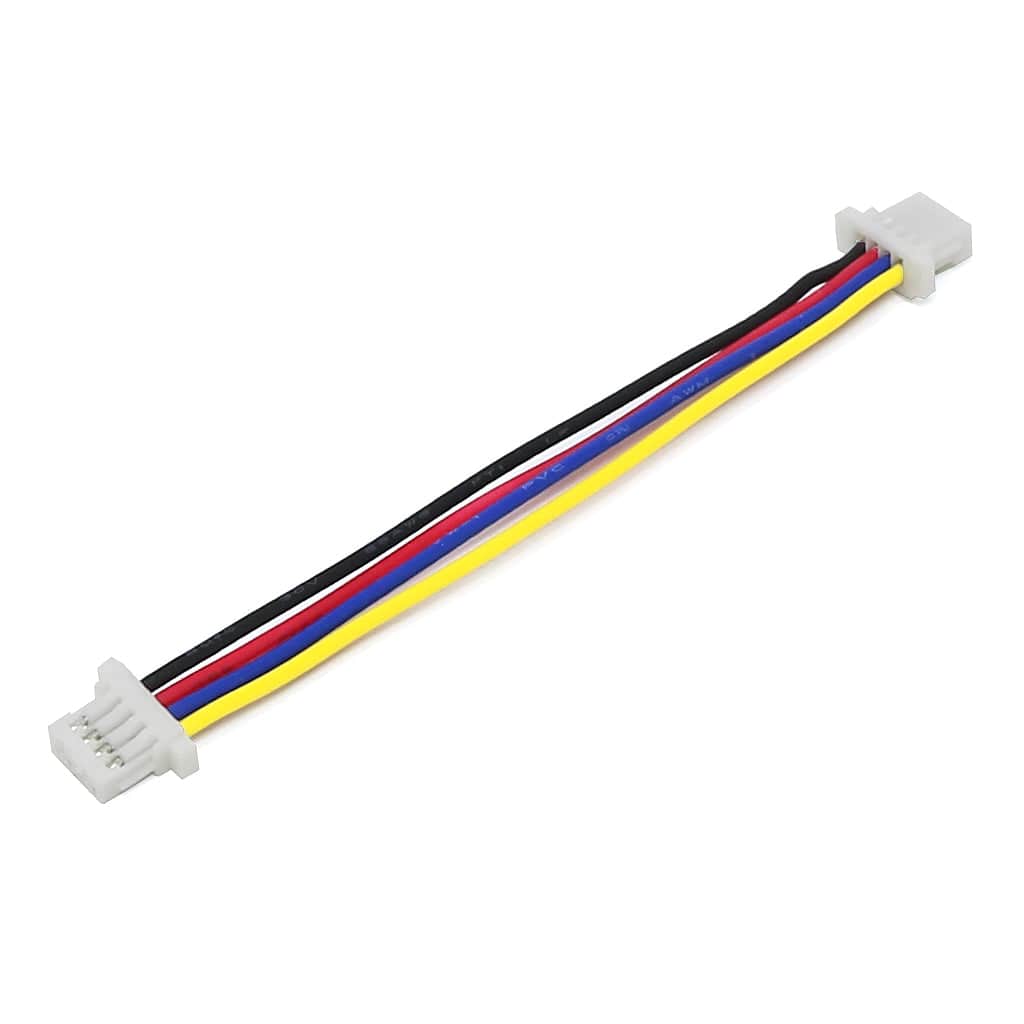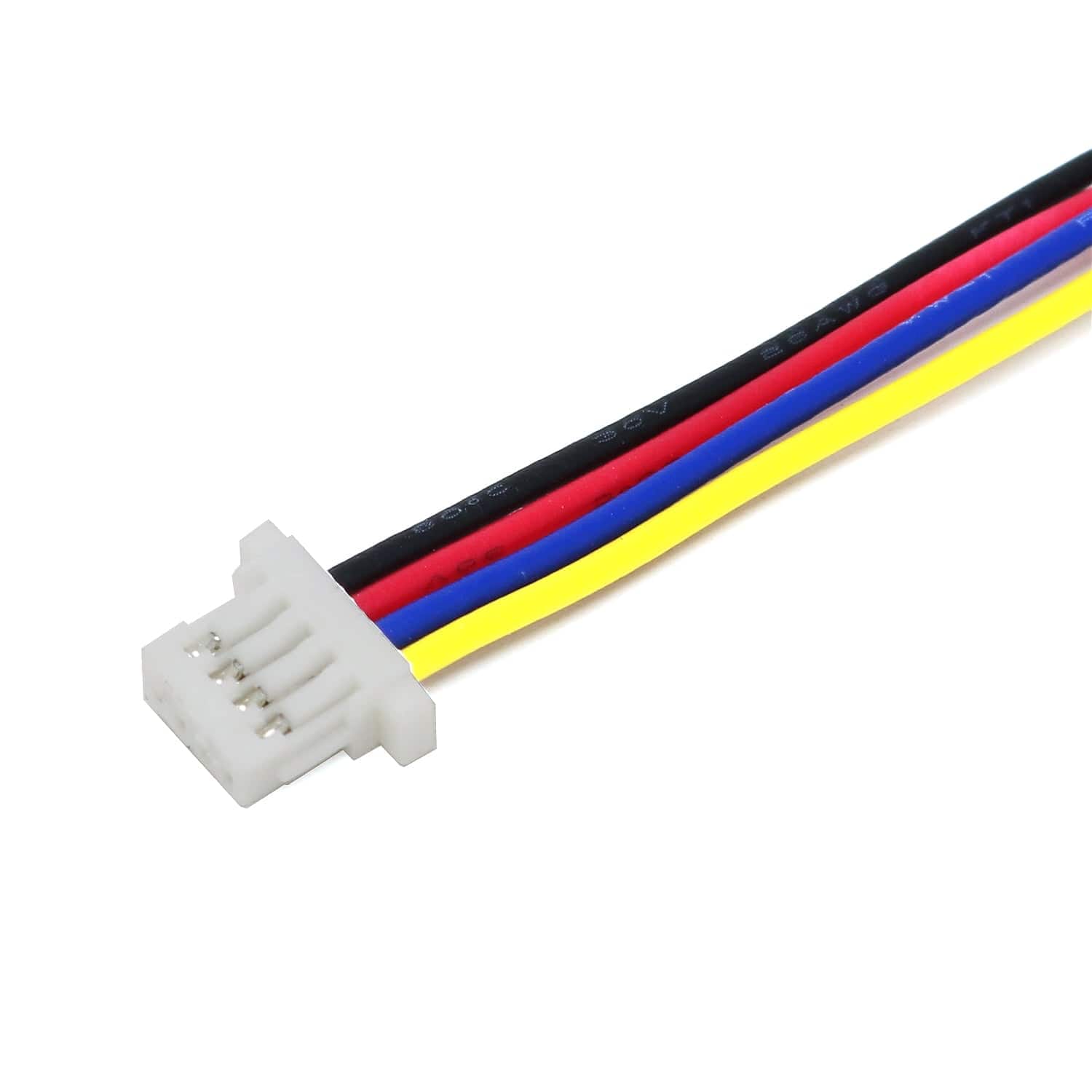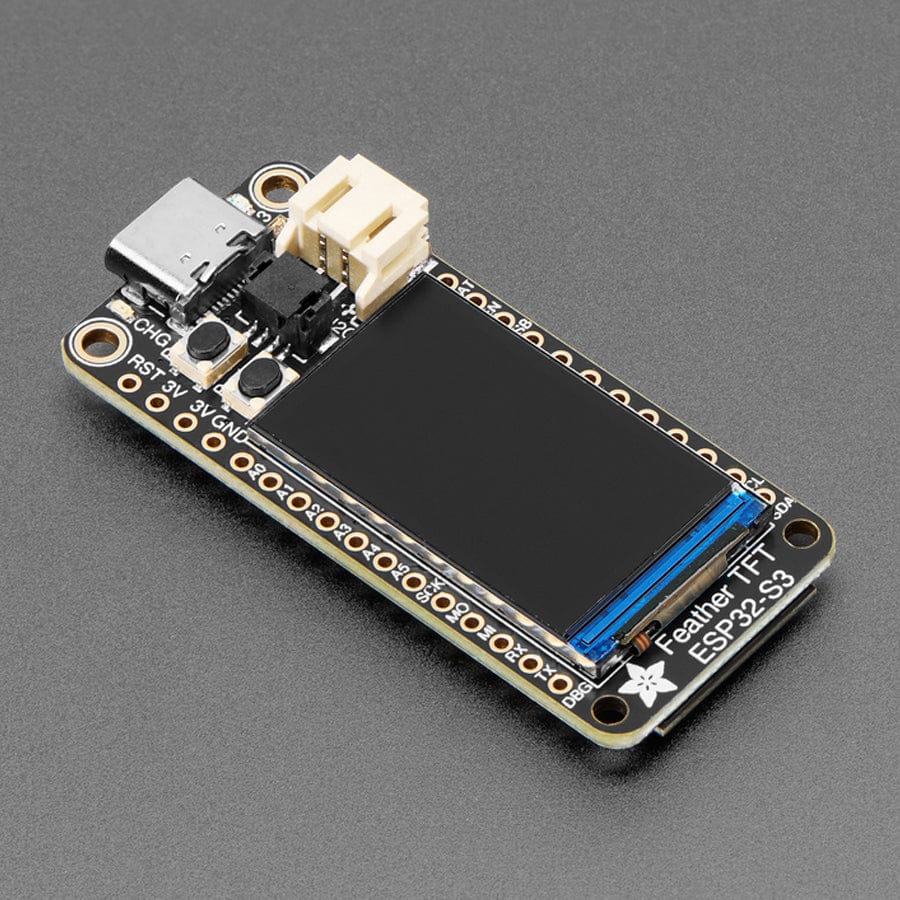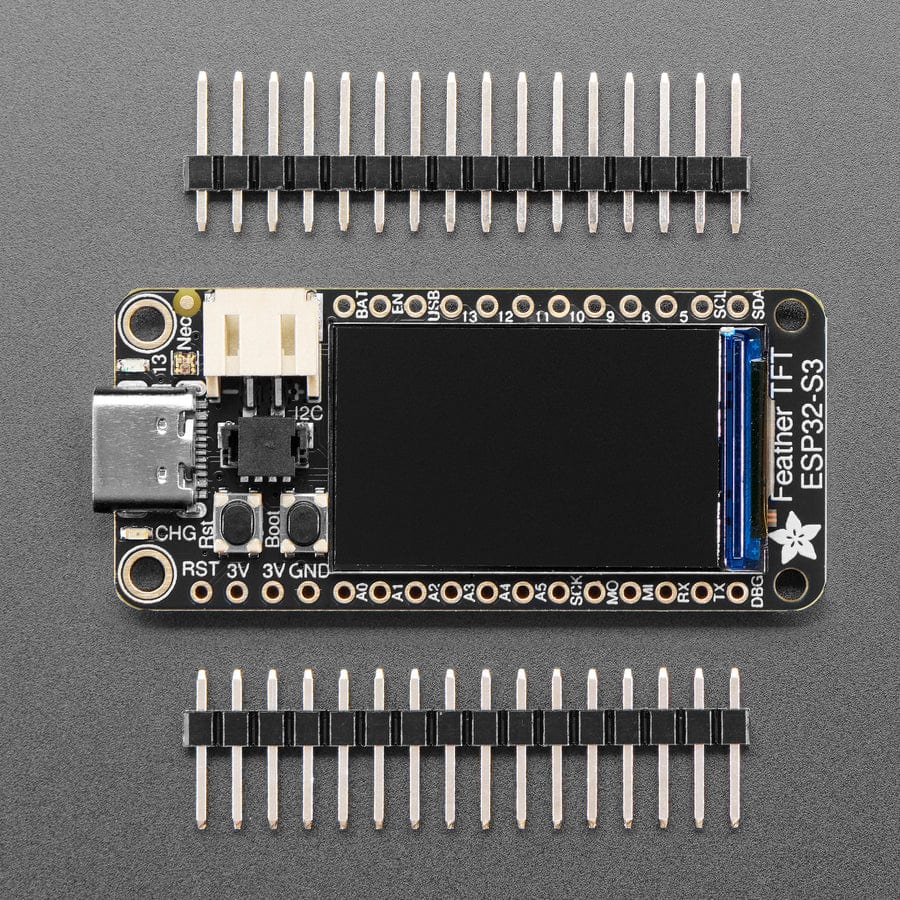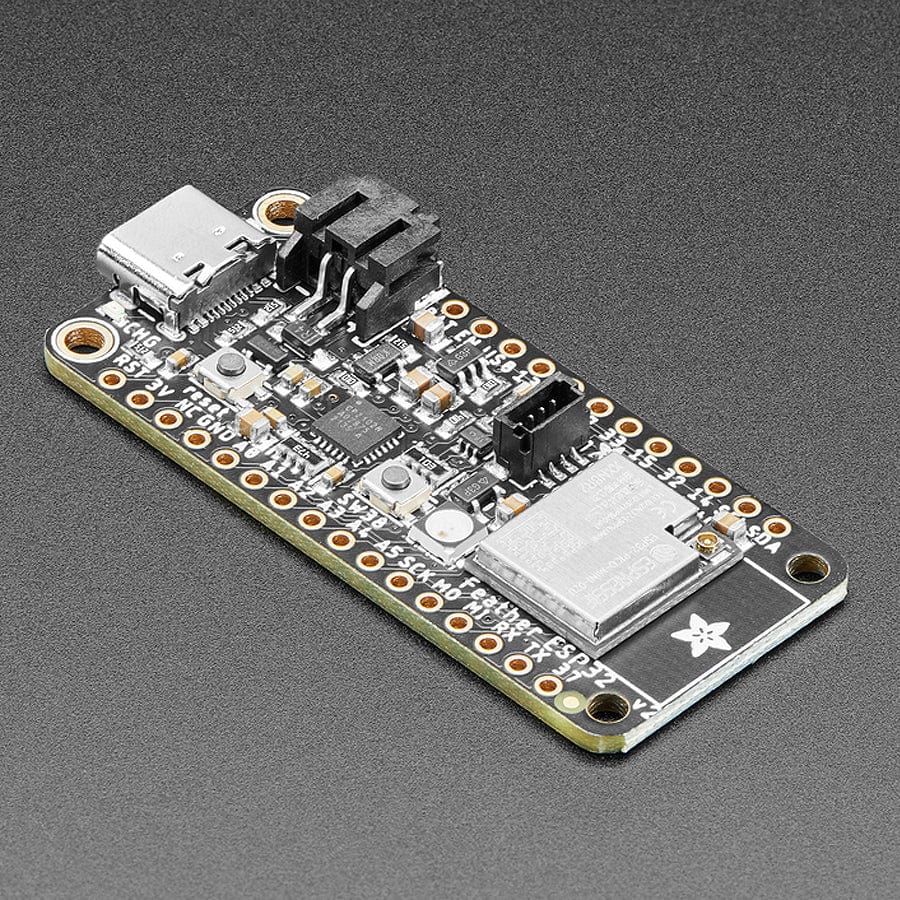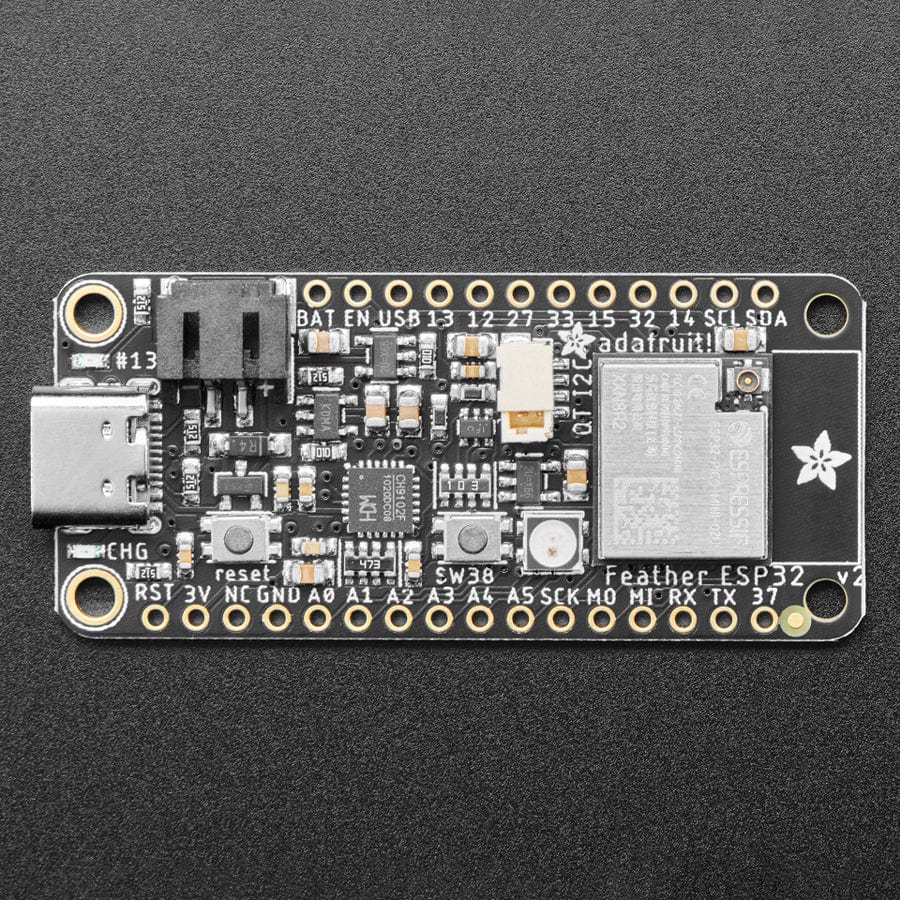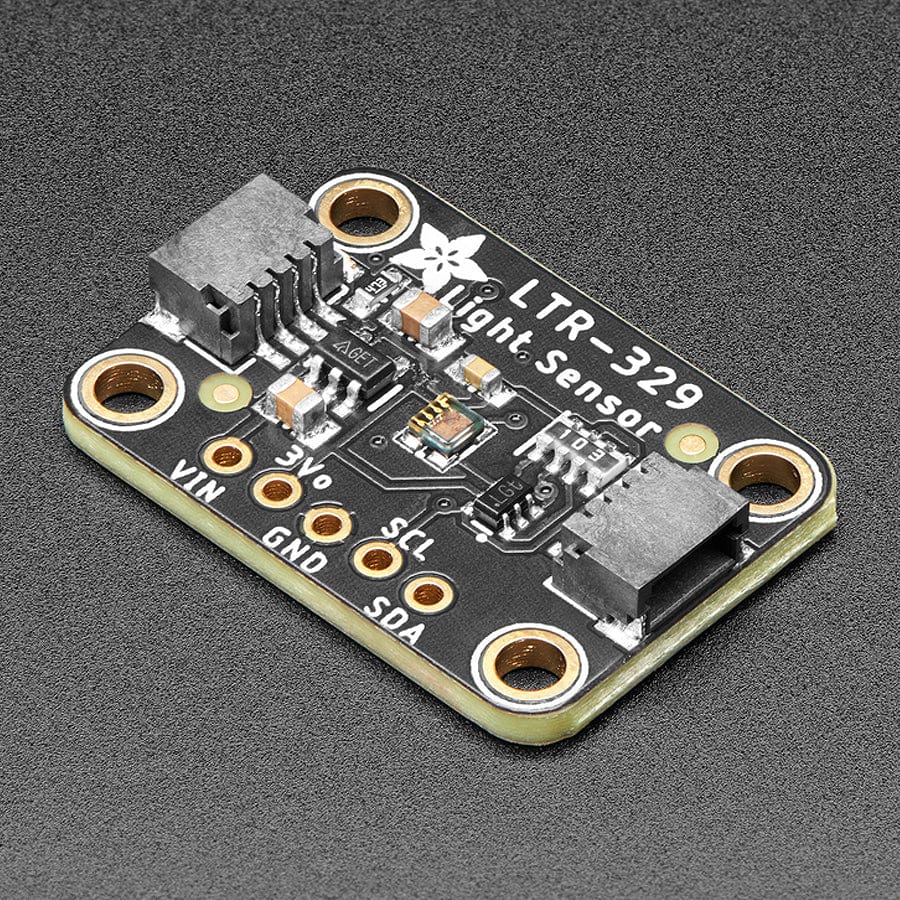
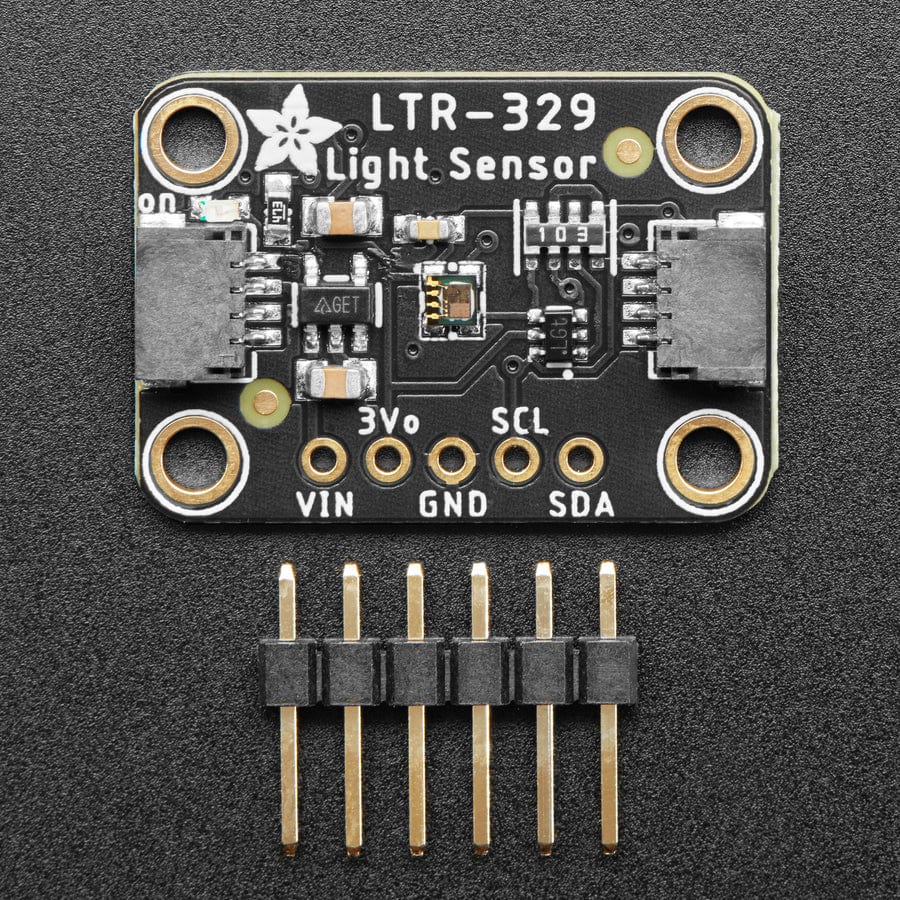
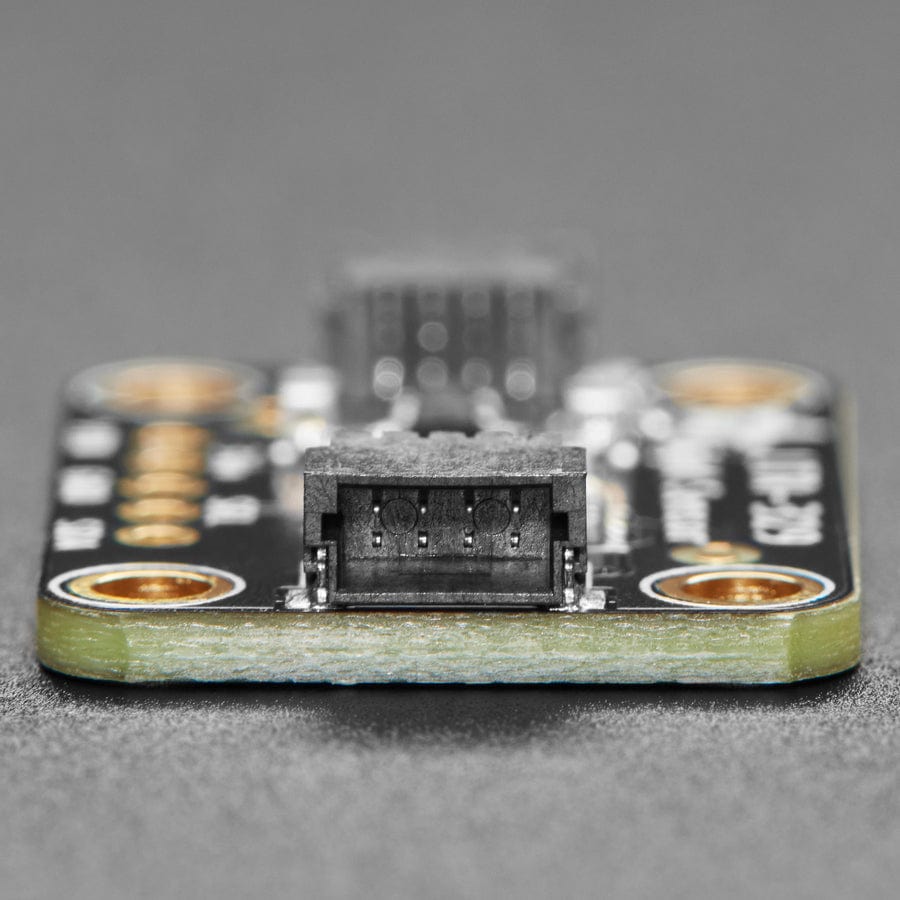
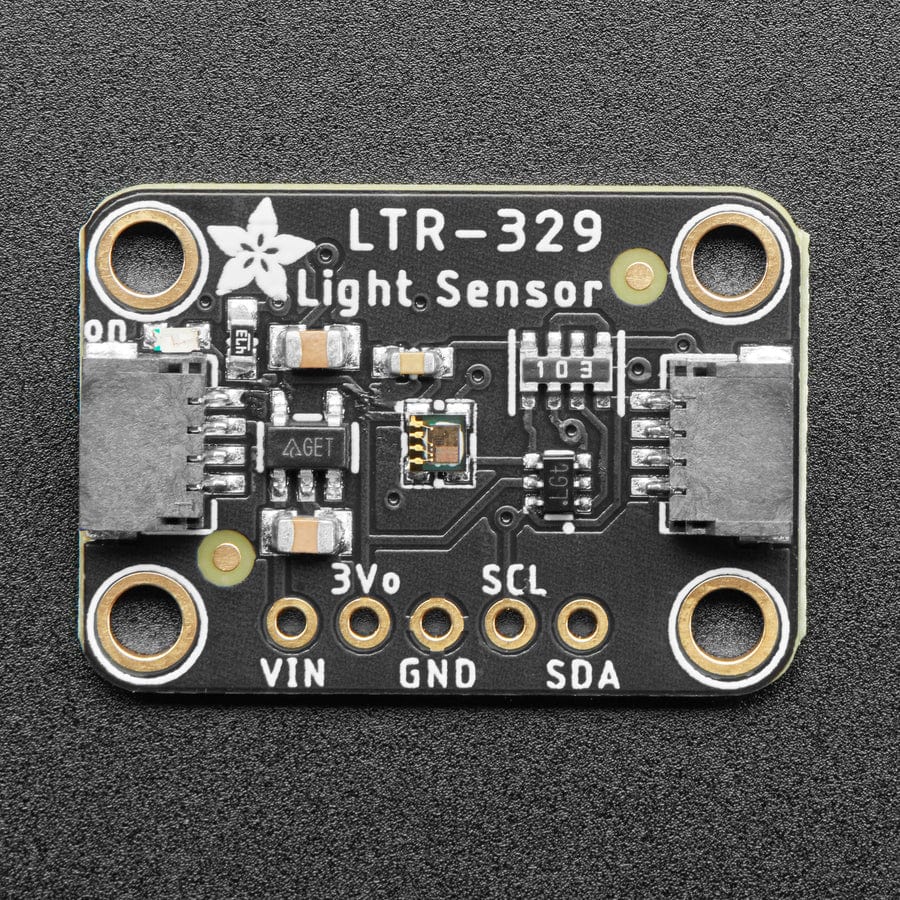
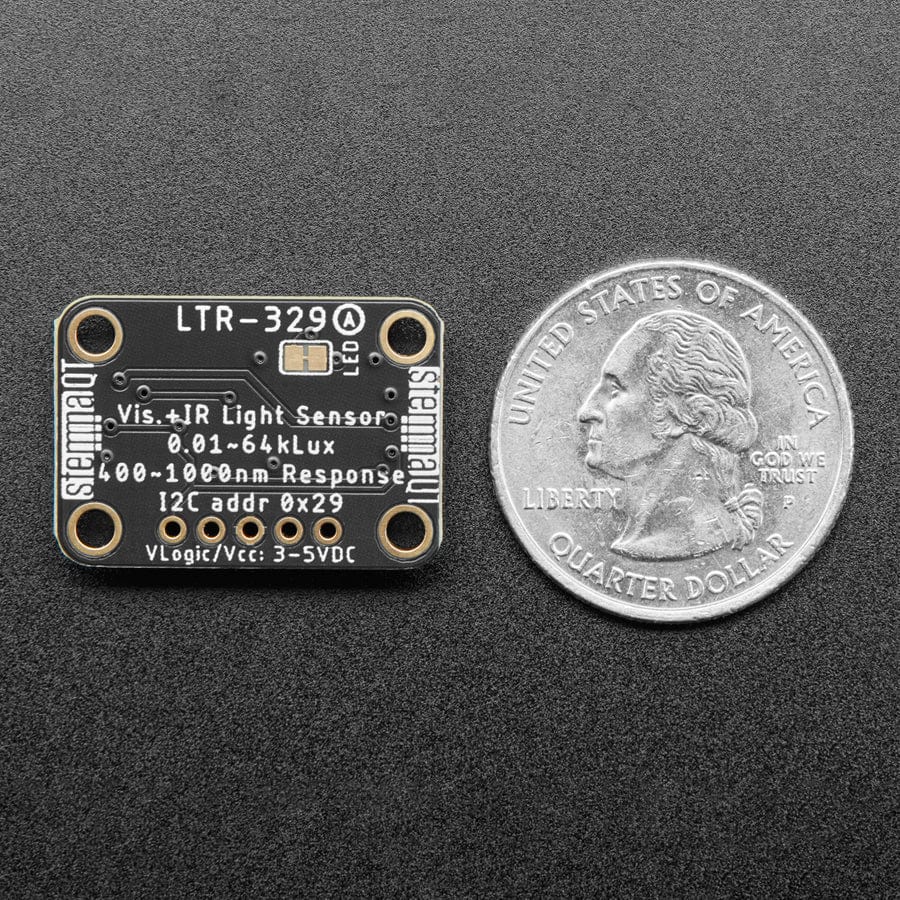
Login / Signup
Cart
Your cart is empty
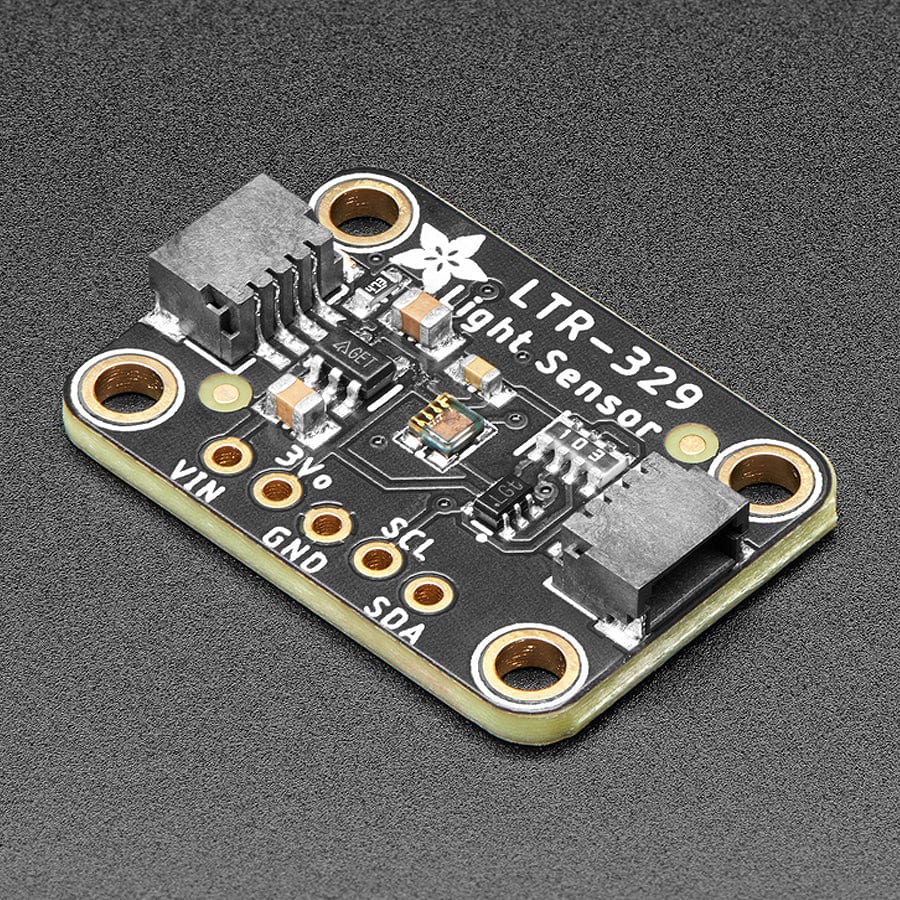
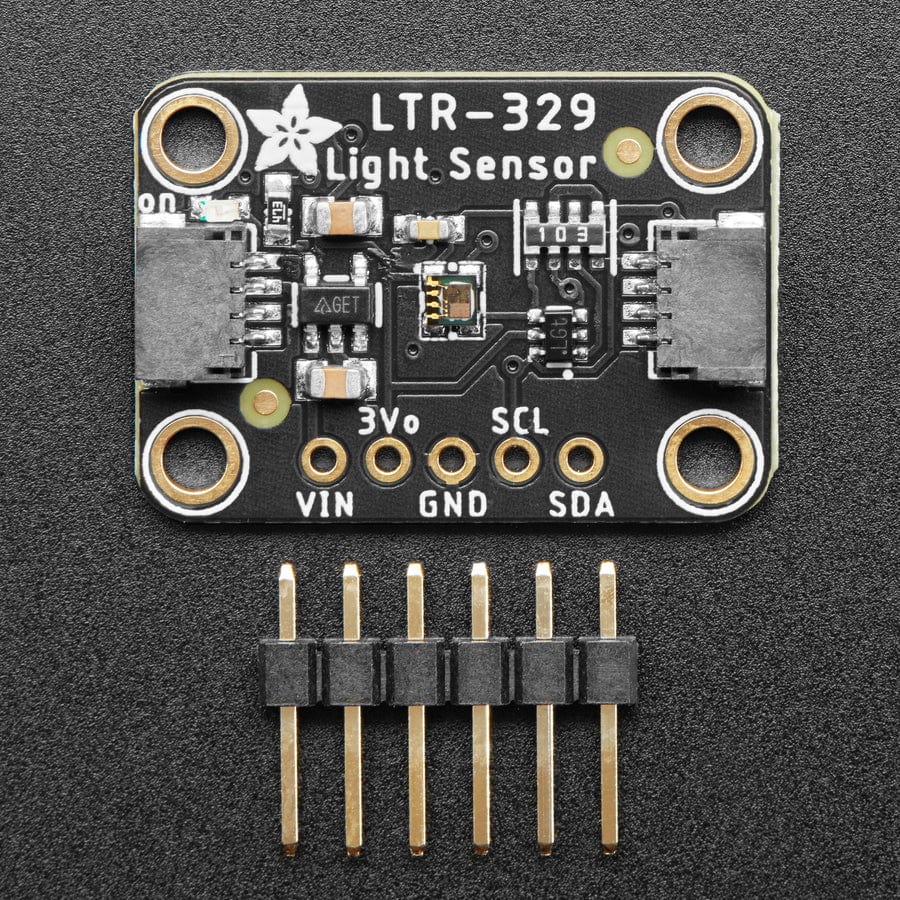
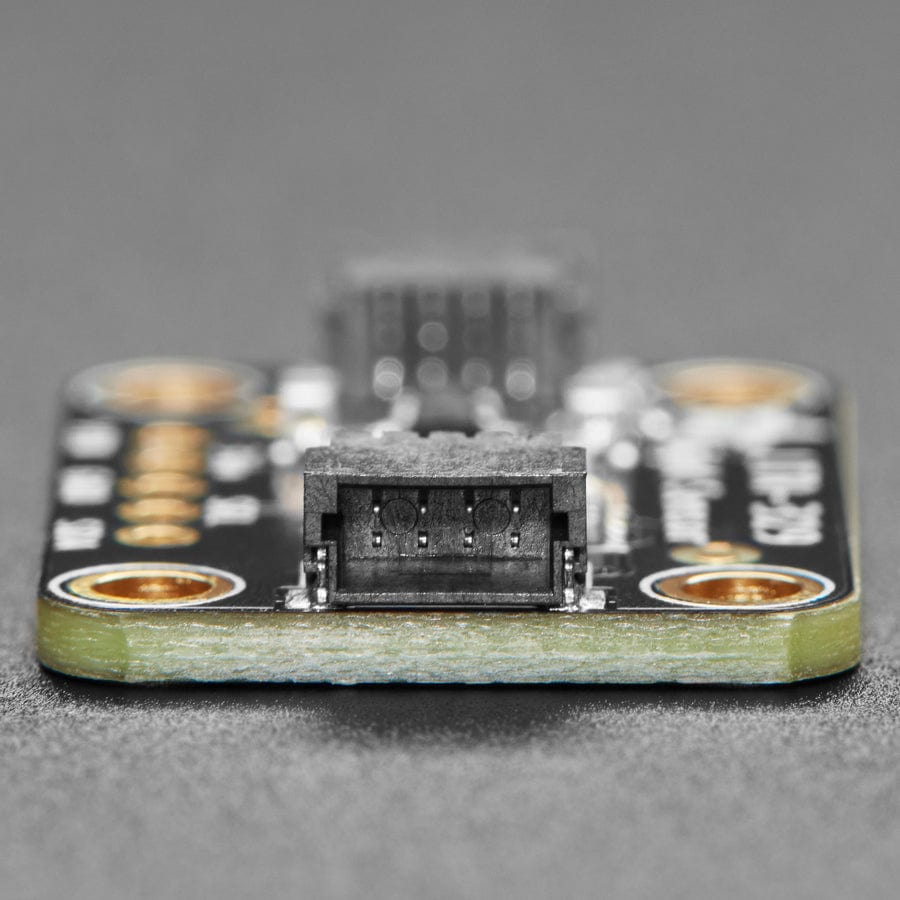
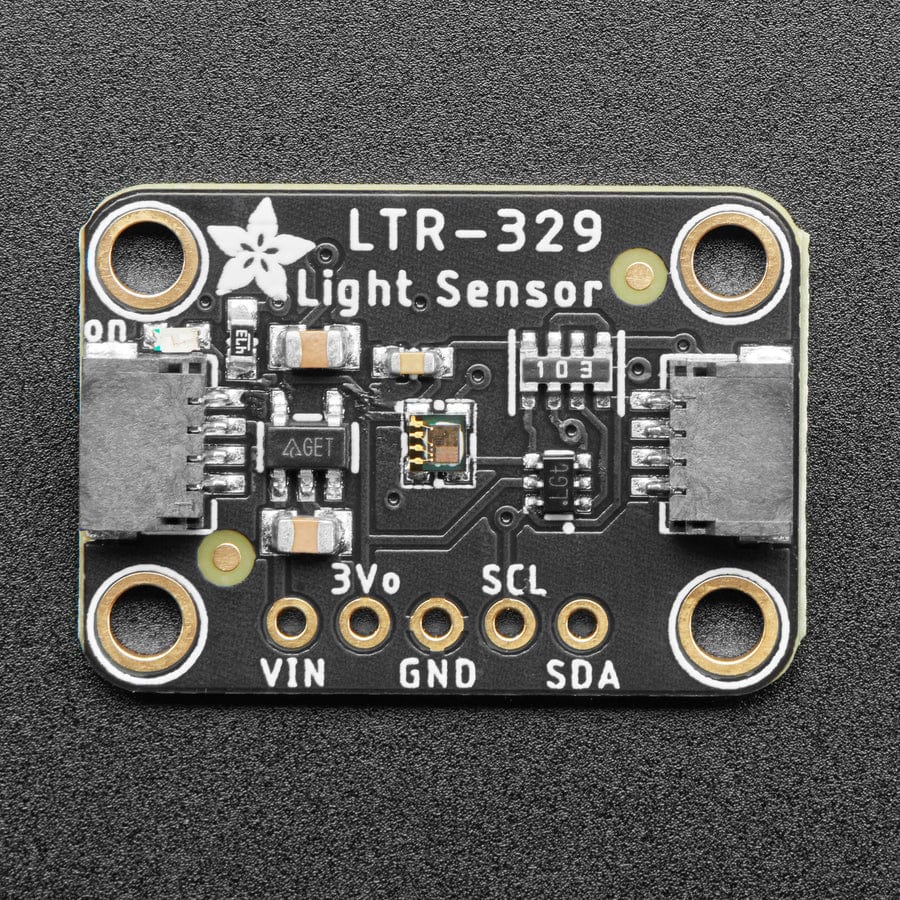
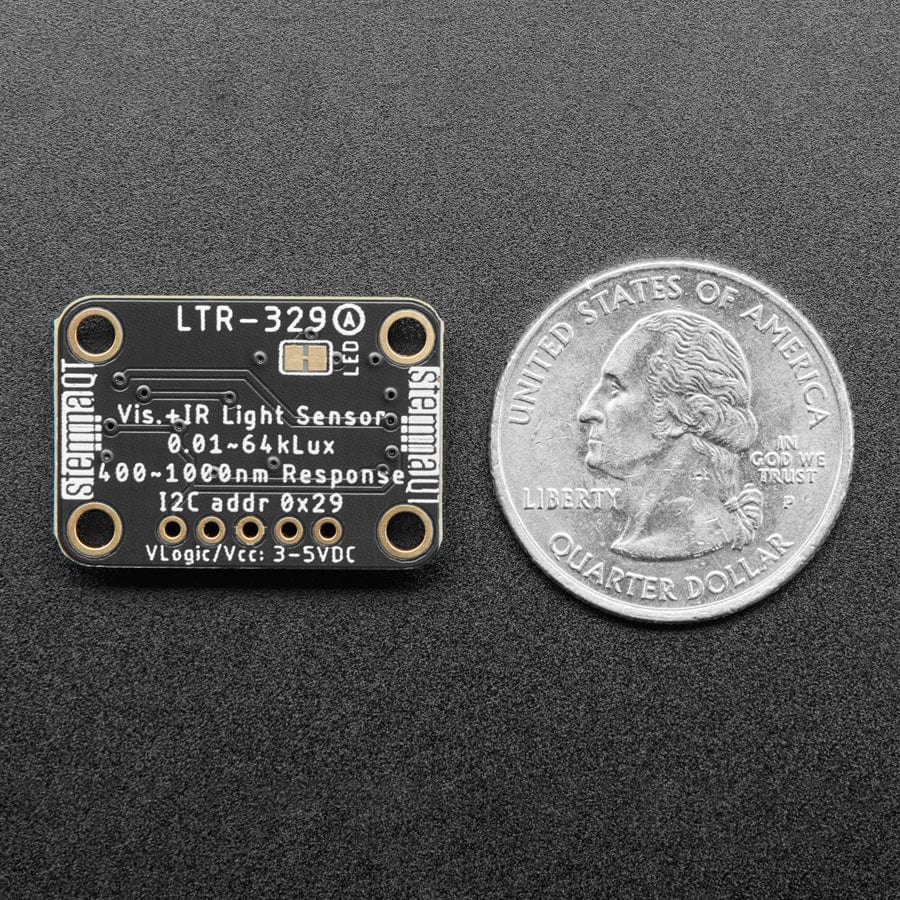
The Adafruit LTR-329 Light Sensor is a simple and popular low-cost I2C digital light sensor that is easy to integrate into your project for reliable and wide-ranging light measurements.
Perfect for a wide range of project use cases: Should we turn up the brightness of our display or dim it to save power? Which direction should your robot move to stay in an area with the most light? Is it day or night? All of these questions can be answered with the help of the LTR-329. It's a small, capable and inexpensive light sensor that you can include in your next project to add the detection and measurement of light.
The LTR-329 provides 16-bit light measurements for both Infrared and Visible+IR spectrums. Subtract one from the other to get human-visible light. Thanks to configurable gain and integration time settings, the LTR-329 can measure from 0 to 65K+ lux.
If you need a version with interrupt output, check out the Adafruit LTR-303 which is basically the same sensor but with alert and IRQ capabilities.
Sensors tend to come in small packages and the LTR-329 is no different. Not much bigger than a grain of rice, this handy light-sensing friend needs some help to be used by folks experimenting and without the desire or tools to work with surface mount parts. We're here to help!
Packaged on a PCB in our STEMMA QT form factor, the LTR-329 comes integrated with a voltage regulator and level shifting circuitry to allow it to be used with 3.3V devices, like a Feather M4 or Raspberry Pi, or 5V devices, such as an Arduino. Rather than working with the itty bitty little contacts on the sensor, the PCB it's packaged on breaks out all the pins to a standard 0.1" / 2.54mm pitch header.
To make things easier and a bit more flexible, we've also included SparkFun Qwiic compatible STEMMA QT connectors for the I2C bus so you don't even need to solder! Just plug in a compatible cable and attach it to your MCU of choice, and you’re ready to load up some software and measure some light. QT Cable is not included, but we have a variety in the shop.
To help with the software part we’ve written a library that you can use with CircuitPython / Python devices as well as computers like the Raspberry Pi by installing it using PyPi. You can even use it on a full-sized computer by using an MCP2221 breakout. Arduino users can use our LTR-329 Arduino library with lots of examples to get started fast.






